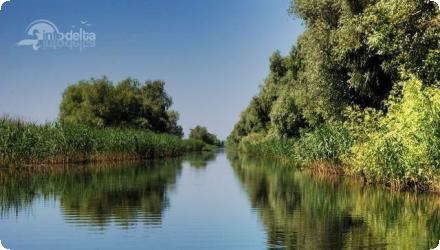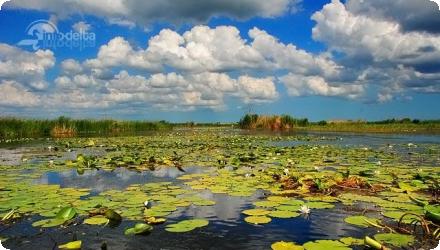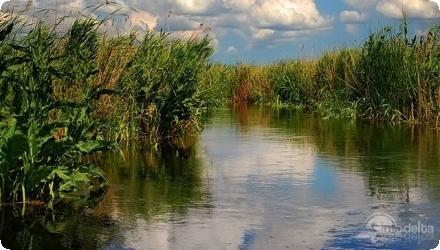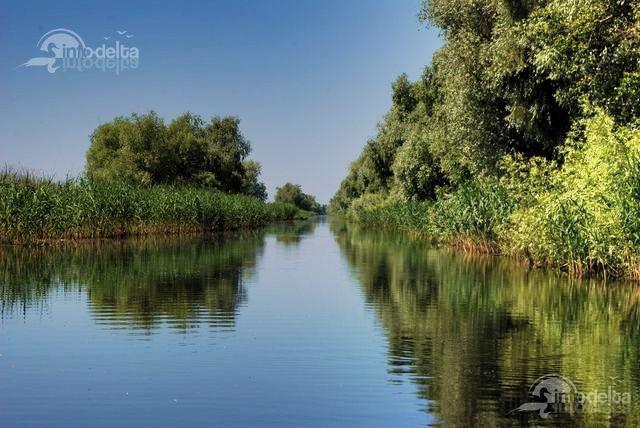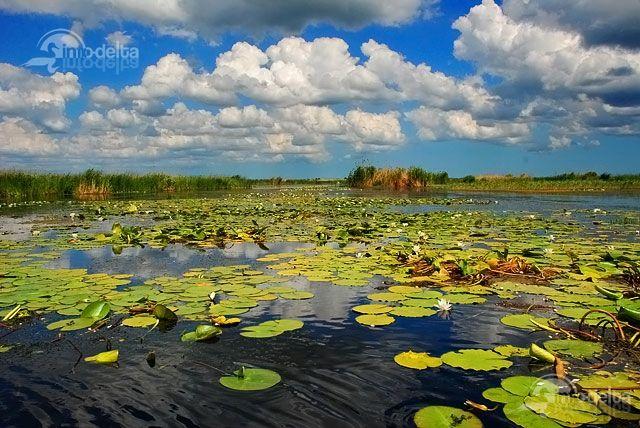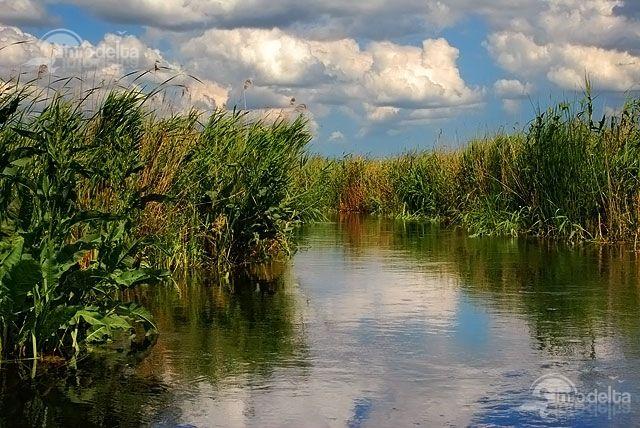Last update
2025
Summary
In the Danube Delta Biosphere Reserve, the ARBDD pursued ecological restoration by reconnecting the former Holbina–Dunavăț fish-farm basins to surrounding wetlands through breaches in the ring dikes, restoring natural hydrological exchange. The 5,630-ha complex was investigated from 1994, with works implemented in 2003–2004, and the project is recorded as complete. Post-restoration monitoring by the Danube Delta National Institute (2016–2017) in the Holbina 1 sector reported 25 fish species and a natural fish productivity of ~159 kg/ha/yr, indicating recovery of aquatic habitats. Today these areas are administered within the Biosphere Reserve and continue to appear in ARBDD annual activity reports (e.g., Holbina I, Holbina II, Dunavăț III). Socio-economic use has shifted towards regulated ecotourism and catch-and-release recreational fishing (e.g., Holbina – 3 Bibani), alongside traditional activities. Overall, the project has re-established wetland habitats, breeding grounds for fish and waterbird, and a sustainable local economy based on nature-compatible use.
Position
Latitude
44.893333
Longitude
29.122778
Project
NWRM
National Id
Romania_04
Installation date
2003-01
Implementation Status
Contact
Bogdan Barbu, REC Imola Koszta, REC
RBD code
RO1000
Transboundary
0
Photo gallery
Location of the project
Within the Danube Delta Biosphere Reserve, on/near the Sf. Gheorghe branch, the restored “Holbina–Dunavăț” basins lie between Dunavățu de Jos village and Lake Razim/Dranov Canal; access is typically by boat from Dunavățu de Jos
NUTS Code
RO22 - Sud-Est
Project's objectives
Restore hydrological connectivity by opening the ring dikes to reintegrate the Holbina–Dunavăț fish-farm basins with surrounding wetlands.
Protect and maintain populations and habitats of high ecological value, and carry out ecological restoration where natural/semi-natural character had been lost.
Limit eutrophication risk by avoiding direct flushing with nutrient-rich canal water and using fringe marshes as nutrient filters (design premise for the restoration strategy).
Spatial scope (quantified): target area 5,630 ha (Holbina I 1,270 ha, Holbina II 3,100 ha, Dunavăț II1+2 1,260 ha).
Protect and maintain populations and habitats of high ecological value, and carry out ecological restoration where natural/semi-natural character had been lost.
Limit eutrophication risk by avoiding direct flushing with nutrient-rich canal water and using fringe marshes as nutrient filters (design premise for the restoration strategy).
Spatial scope (quantified): target area 5,630 ha (Holbina I 1,270 ha, Holbina II 3,100 ha, Dunavăț II1+2 1,260 ha).
Involved Partners
| Authority type | Authority name | Role | Comments |
|---|---|---|---|
Climate zone
warm temperate moist
Temperature
11°C
Precipitation
350
Annual rainfall range
300 - 600 mm
Evapotranspiration
760
Elevation range
7
Groundwater level
shallow phreatic water influenced by Danube levels; depths ~0.5–1.0 m in interdune depressions.
Vegetation class
Reed-marsh wetlands dominated by common reed (Phragmites australis) with aquatic macrophytes (typical delta reedbeds).
Water bodies: Ecological Status
Good
Water bodies: Chemical Status
Good
Water quality status
Mid-1990s eutrophication/turbid state documented for Holbina II. Peat substrates under Holbina I & II generate acidity that limited aquaculture
Project scale
Micro
Project scale specification
It targets a specific site—the Holbina–Dunavăț former fish-farm basins inside the Danube Delta—where ring dikes were breached to reconnect ~5,630 ha to the natural flood pulse. This is a localized hydromorphological intervention within one delta sector (Dunavăț–Dranov), not a whole sub-basin or region.
Project area
5630
Lifespan
50
Total cost
€200,000
Financing authorities
Type of funding
National funds
Comments
National budget
Type of funding
Private funds
Compensations
0
Policy context
Flood risk management; Hydromorphology- Quantity and dynamics of flow, Continuity for organisms, Width and depth variation; Biology - Fish, Macrophytes, Phytoplankton; Physico-chemical - Nutrient concentrations; Other reasons for the project- Landscape enhancement, Reintegration of the fish farm basins with the surrounding wetlands, Biofilter for the Danube, Razim and Black Sea
Land ownership
4,335 ha renatured fish-farming enclosures included in the public domain of national interest and administered by ARBDD (Danube Delta Biosphere Reserve Authority).
Community involvment
No
Design consultation activity
| Activity stage | Name | Key issues | Comments |
|---|
Policy target
| Target purpose |
|---|
|
Pollutants Removal
|
|
Oher Societal Benefits
|
Policy pressure
| Pressure directive | Relevant pressure |
|---|
Policy impact
| Impact directive | Relevant impact |
|---|
Requirement directive
| Requirement directive | Specification |
|---|
Contractual arrangements
0
| Arrangement type | Responsibility | Role | Name | Comments |
|---|
Part of wider plan
0
Wider plan type
| Wider plan type | Wider plan focus | Name | Comments |
|---|
Monitoring is led scientifically by the Danube Delta National Institute (DDNI) and managerially by ARBDD, with dedicated studies in Holbina (e.g., Holbina-1 in 2016–2017) and recurring ARBDD monitoring actions in “ecological restoration zones”
Integrated wetland monitoring used 14 biotic/abiotic parameters to compute biogenic capacity and natural fish productivity; field campaigns covered water quality, phytoplankton, zooplankton, benthos, macrophytes and ichthyofauna; 25 fish species were recorded; natural fish productivity was ~159 kg/ha/yr in 2016–2017.
Maintenance
ARBDD carries out hydrotechnical maintenance that sustains water circulation in the Dunavăț–Dranov/Razim–Sinoie complex (incl. Dunavăț & Dranov canals), chiefly through periodic canal de-silting and related works, under permitting and oversight procedures
25 fish species and natural fish productivity around ~159 kg/ha/yr (biological recovery indicator).
renaturation, the area is used for regulated recreational fishing and ecotourism; ARBDD designates Holbina 1 & Holbina 2 among the official recreational-fishing zones, under an ARBDD permit regime. A private operator at Holbina runs catch-and-release pike angling and lodging.
ARBDD’s management rules allow year-round grazing in the Dranov–Dunavăț complex (the Holbina/Dunavăț hydrological unit), indicating ongoing pastoral use.
renaturation, the area is used for regulated recreational fishing and ecotourism; ARBDD designates Holbina 1 & Holbina 2 among the official recreational-fishing zones, under an ARBDD permit regime. A private operator at Holbina runs catch-and-release pike angling and lodging.
ARBDD’s management rules allow year-round grazing in the Dranov–Dunavăț complex (the Holbina/Dunavăț hydrological unit), indicating ongoing pastoral use.
Information on retained water
Reconnection & breaches. The site was re-opened by breaching ring dikes; for example, four small breaches were recorded on Holbina II in 2002 (before works finalisation), evidencing restored exchanges with the canal network.
Water quality overall improvements
Positive impact-WQ improvement
Information on Water quality overall improvements
State shifts (clear ↔ turbid). Holbina II demonstrated bistability: it shifted from a mesotrophic clear-water state to a turbid state in the mid-1990s, then reverted to clear water in 2002. Management was advised to retain the clear state and avoid strong inflows of eutrophic canal water unless paired with monitoring. No quantified flood-storage, groundwater, or “retained water” volumes were reported for this site.
Nutrients / reed-bed filtering (unexpected). Field studies found high retention of suspended silt and nitrogen in reed filters, but no effective phosphorus retention; in summer, reed beds acted as a phosphate source, contradicting the initial “nutrient filter” hypothesis. Implication: direct flushing with reed-filtered water could still drive eutrophication under stagnant conditions.
Peat acidity constraint. Holbina I–II sit on peat deposits whose generated acidity hampered fish-farm performance—one of the rationales for renaturation.
Nutrients / reed-bed filtering (unexpected). Field studies found high retention of suspended silt and nitrogen in reed filters, but no effective phosphorus retention; in summer, reed beds acted as a phosphate source, contradicting the initial “nutrient filter” hypothesis. Implication: direct flushing with reed-filtered water could still drive eutrophication under stagnant conditions.
Peat acidity constraint. Holbina I–II sit on peat deposits whose generated acidity hampered fish-farm performance—one of the rationales for renaturation.
Soil quality overall soil improvements
Positive impact-SQ improvement
Information on Soil quality overall soil improvements
Nutrient concentrations
1
DDNI’s 2016–2017 study in Holbina 1 reported 25 fish species
Key lessons
Reedbeds did not behave as universal nutrient filters. Field work around Holbina II showed reed marshes retained silt and nitrogen but released phosphate in summer, undermining the initial “flush-through-a-reed-filter” concept. Design assumptions about nutrient removal must be tested in situ and paired with monitoring before scaling up.
Hydro-ecology is bistable and sensitive to residence time. Holbina II toggled between turbid and clear-water states in the 1990s–2002; breach size/number/placement change residence time and sedimentation, which can tip the system either way. The recommendation was to retain the then-clear state and avoid major works unless accompanied by systematic study.
Post-restoration monitoring pays off. A DDNI one-year survey in Holbina 1 (2016–2017) recorded 25 fish species and ~159 kg/ha/yr natural fish productivity—evidence that functional habitat can recover and that outcomes are quantifiable for management.
Governance clarity was pivotal. A 2000 court decision confirmed DDBRA’s administrative/user rights over the area, removing a key procedural obstacle for restoration management and enforcement.
At program level, communication and participation matter. The World Bank’s implementation review flags early public-awareness and community involvement as critical—and warns not to rely on unconfirmed parallel investments (e.g., the EBRD loan) when designing restoration programs.
Hydro-ecology is bistable and sensitive to residence time. Holbina II toggled between turbid and clear-water states in the 1990s–2002; breach size/number/placement change residence time and sedimentation, which can tip the system either way. The recommendation was to retain the then-clear state and avoid major works unless accompanied by systematic study.
Post-restoration monitoring pays off. A DDNI one-year survey in Holbina 1 (2016–2017) recorded 25 fish species and ~159 kg/ha/yr natural fish productivity—evidence that functional habitat can recover and that outcomes are quantifiable for management.
Governance clarity was pivotal. A 2000 court decision confirmed DDBRA’s administrative/user rights over the area, removing a key procedural obstacle for restoration management and enforcement.
At program level, communication and participation matter. The World Bank’s implementation review flags early public-awareness and community involvement as critical—and warns not to rely on unconfirmed parallel investments (e.g., the EBRD loan) when designing restoration programs.
Success factor(s)
| Success factor type | Success factor role | Comments | Order |
|---|---|---|---|
|
Successful coordination between authorities
|
main factor
|
Strong institutions & partnerships (DDBRA–DDNI with Dutch RIZA support) and targeted GEF/World Bank backing. |
|
|
Existing institutional framework
|
secondary factor
|
Legal/administrative clarity after 2000 enabling coherent site management. |
|
|
Other
|
secondary factor
|
Hydrological reconnection via breaches applied cautiously and adaptively. |
|
|
Conducted assessments (incl. economic)
|
secondary factor
|
Evidence-based monitoring (Holbina 1) to verify recovery and guide operations. |
|
|
Conducted assessments (incl. economic)
|
secondary factor
|
Programmatic learning loop from the Danube Delta Biodiversity Project (methods, indicators, replication). |
Driver
| Driver type | Driver role | Comments | Order |
|---|
Transferability
Highly transferable to other reclaimed fishponds or diked wetlands—if reconnection is tailored. Handle with care: nutrient dynamics (reedbeds can release P in summer); avoid importing eutrophic canal water; size/place breaches to manage residence time and avert turbid-state shifts; secure land tenure/permits; couple works with multi-parameter monitoring (water quality, macrophytes, fish); plan socio-economic transition (access, fishing rules) early.
English
